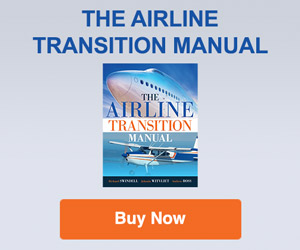
From tornadoes to floods, power outages to break-ins, wildfires and other general mayhem, things will occur while you are out flying. Having contacts, a plan, and the ability to compartmentalize the situation until you can safely conclude your flying duties and adequately face the situation is imperative. In this month’s installment of dealing with disaster on the road, the focus is getting off the road and back home.
“What would I do if …?” is something you probably do in the plane all the time: Where would I go right now if I lost an engine? What are my procedures if I have a rapid decompression over the mountains? We think about and plan for these exigencies of the air, but often neglect developing one for the ground. What would you do if your home experienced a flood, fire, or break-in? What is your plan for getting out of a trip and getting where you need to be in order to deal with an emergency?
Whether you are single, have a significant other, partner or spouse at home, ask yourself where the “line in the sand” is for calling off a trip and heading there as quickly as possible. What can a spouse or partner (or even a neighbor) handle and not handle in your absence? Is this line a flooded basement? What about a tree branch that fell and crushed your carport? How about a sick or injured child or family member in an emergency room?
Next, what are your company’s policies for emergency leave – whom should you speak with if you need to punch out in the middle of a trip, or drop a trip before it starts? Will your company help you get home? What assistance does your union or pilot group offer? Do you have these contacts and phone numbers readily available?
Then, how would you actually get home from a trip? If you fly domestically, perhaps catching the next available passenger or cargo flight is a relatively easy option, or maybe driving is a possibility if flights are not available. Would you try to secure a one-way car rental, a train ticket perhaps, or call a friend or family member for a ride?
If you fly internationally, this might be trickier depending on timing and location, but ultimately the same problem exists – how to get back as quickly as possible. You might not have much of a choice but to simply wait for your scheduled flight back. The decision you do have to make however, is whether or not you can continue flying safely. The IMSAFE checklist definitely applies here, and if you elect to continue flying, you should certainly consider discussing (to the extent comfortable and appropriate) the situation with your flight crewmates. Then absolutely continue to self-monitor and reevaluate your fit-to-fly status.
Lastly, and although not typically high on the general list of concerns as far as a critical situation goes, but how (if required) are you going to pay for the arrangements to get home if necessary? Non-revving is great, but flights are often full and standby travel may not be the best option if time is of the essence. Thus, you might need to buy a ticket on your own airline (or perhaps another airline) if your employer is unable or unwilling to provide you with positive space transportation to get you where you need to be. A vehicle, lodging, and food may all be needed as well. Do you have space on a credit card for a full-fare plane ticket plus other logistics and necessities? Do you keep an “emergency only” credit card that you can utilize? If you routinely do not have available assets and/or you do not have an emergency-use-only credit card in your flight kit, consider getting one as soon as possible.
Next month we will talk more about dealing with disasters while you are on the road, along with resources and assistance to get you where you need to be. Until then, give your ground emergency plan some thought.






















































